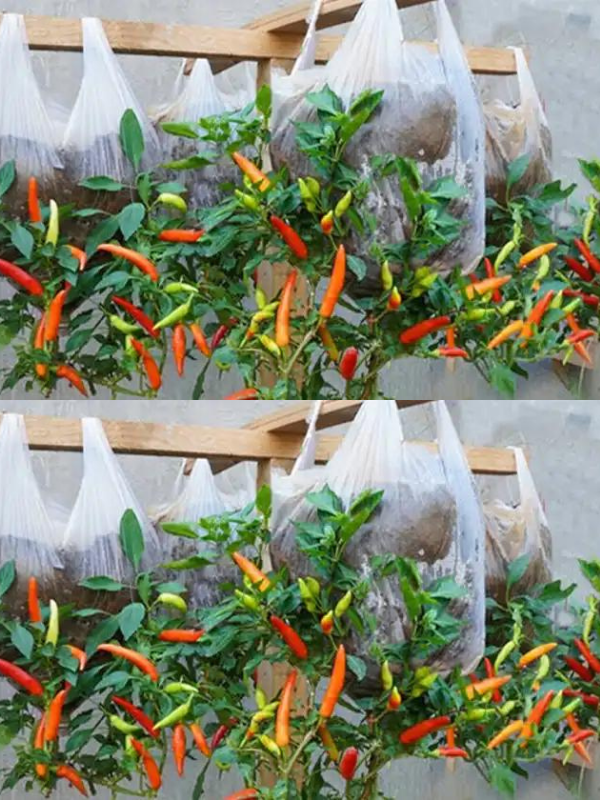If you’re looking for an innovative and space-saving way to grow peppers, consider using plastic handbags as hanging planters. This creative growing technique not only maximizes your space, but also adds a unique aesthetic element to your garden. In this article, we’ll show you how to grow peppers in plastic bags that you can hang on a support.
Materials Needed
Before you start your hanging pepper garden, you should get the following materials:
- Plastic handbags (preferably reusable and sturdy)
- Potting
- Seedlings or seeds of pepper plants
- Scissors
- Fertilizer
- A sturdy support structure (e.g. a trellis, wooden frame or metal stakes)
- Watering can or hose
Step-by-step instructions
- Choose the right bags: Choose plastic bags that are sturdy enough to support the weight of peppers, potting soil, and water. The bags should also have drainage holes to prevent waterlogging.
- Prepare the soil: Fill each plastic bag with high-quality potting soil, leaving about 5 cm of space at the top so that you can water the plants. Make sure the soil is well aerated and nutrient-rich.
- Plants: Depending on the size of the bags, plant 1-2 pepper plants in each bag. Dig small holes in the soil and plant the seedlings or seeds according to the recommended spacing for the particular type of pepper you are growing.
- Fertilize: Fertilize the soil with a slow-release fertilizer according to the instructions on the package. As a result, the pepper plants are supplied with important nutrients throughout the growing season.
- Watering: After planting, water the pepper plants thoroughly to allow the soil to settle. Afterwards, water the bags regularly to keep the soil evenly moist but not to create waterlogging. Holster bags can dry out faster than traditional containers, so you’ll want to monitor moisture levels closely.
- Support structure: Hang the plastic bags on a sturdy support structure. Make sure it can support the weight of the plants as they grow and are loaded with peppers. Adjust the height of the bags as needed to ensure good air circulation and sun exposure.
- Sunlight: Place your hanging pepper bags in a place where they receive at least 6-8 hours of direct sunlight per day. Bell peppers thrive in full sun.
- Pruning: As your pepper plants grow, consider pruning them to encourage bushier growth and better air circulation. Remove any yellowed or dead leaves and any competing shoots.
- Pest and disease control: Watch out for common pepper pests and diseases. If you notice any problems, you should address them promptly with appropriate treatments to prevent them from spreading.
- Harvesting: Once your pepper plants start bearing fruit, harvest the peppers regularly when they reach the desired size and color. Harvesting promotes further fruiting.
Benefits of growing peppers in hanging plastic bags
- Space efficiency: Holster pockets make it possible to make the most of the limited space, making them ideal for balconies, small gardens or even indoor gardens.
- Better air circulation: Hanging plants often have better air circulation, which reduces the risk of fungal diseases and pests.
- Aesthetic effect: Hanging pepper bags can be an attractive and unique element for your garden or living area.
- Easy maintenance: These bags are easily accessible for watering, pruning and harvesting, which is easy on the back and knees.
Inference
Growing peppers in plastic bags that can be hung on a rack is an innovative and space-saving solution for horticulture. With proper care and attention to the needs of your pepper plants, you can enjoy a bountiful harvest of fresh, home-grown peppers in a small space. Whether you have a small urban balcony or a large garden, this method will allow you to add a touch of greenery and spice to your surroundings. Happy gardening!

